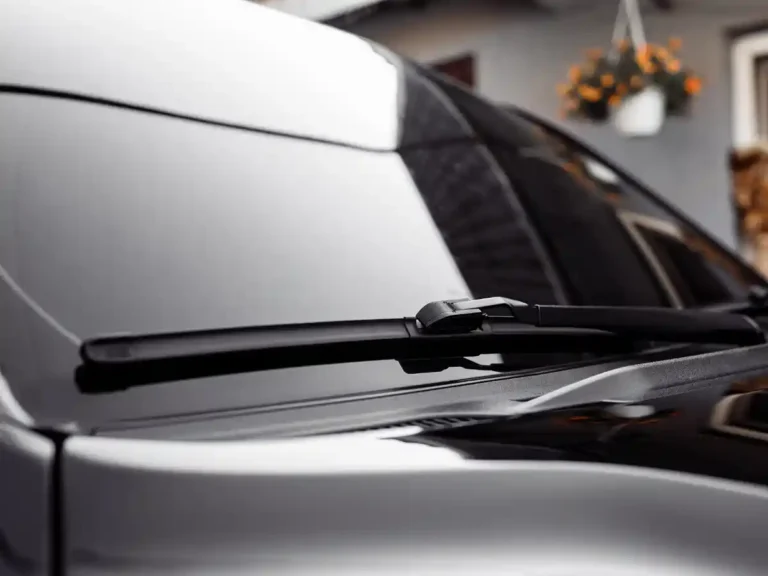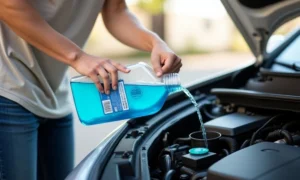OEM vs aftermarket windshield | When it comes to replacing your vehicle’s windshield, the choice between OEM (Original Equipment Manufacturer) and aftermarket options can be a significant consideration. OEM windshields are those produced by the same manufacturer as the original windshield installed in your car, while aftermarket windshields are made by third-party companies. Each option comes with its own set of advantages and disadvantages, making it essential to weigh your priorities before making a decision.
OEM vs Aftermarket Windshield

Quality Comparison
Materials Used:
OEM: OEM windshields are typically made using materials that meet the original specifications of the vehicle manufacturer. These materials are often of high quality and designed to integrate seamlessly with the vehicle.
Aftermarket: Aftermarket windshields may vary in materials used, ranging from OEM-equivalent to lower-quality materials. Some aftermarket manufacturers aim to replicate OEM standards, while others may compromise on materials to offer lower prices.
Manufacturing Process:
OEM: OEM windshields are manufactured according to strict quality control standards set by the vehicle manufacturer. The process often involves advanced technologies and precise manufacturing techniques.
Aftermarket: The manufacturing process for aftermarket windshields can vary among different suppliers. While some may adhere to high-quality standards, others may not have the same level of precision and consistency as OEM manufacturers.
Fit and Finish:
OEM: OEM windshields are designed to fit perfectly with the vehicle, ensuring a seamless integration that matches the original specifications.
Aftermarket: Fit and finish can vary with aftermarket windshields. While some may offer a perfect fit, others may require adjustments during installation and may not match the original aesthetics of the vehicle as closely.
Cost Comparison
Initial Purchase Price:
OEM: OEM windshields generally come at a higher initial purchase price due to the brand name and quality assurance associated with them.
Aftermarket: Aftermarket windshields are typically more affordable upfront, offering cost savings compared to OEM options.
Long-Term Value:
OEM: Despite the higher initial cost, OEM windshields may provide better long-term value due to their quality construction, which can lead to fewer issues over time.
Aftermarket: While aftermarket windshields offer immediate cost savings, their long-term value may vary depending on the quality of materials and manufacturing standards.
Performance Comparison
Safety Features:
OEM: OEM windshields often come with safety features such as built-in sensors for automatic wipers, defoggers, or lane departure warning systems, maintaining the vehicle’s original safety specifications.
Aftermarket: Some aftermarket windshields may lack certain safety features or may not integrate as seamlessly with the vehicle’s existing safety systems.
Durability and Longevity:
OEM: OEM windshields are engineered for durability and longevity, designed to withstand various environmental conditions and maintain structural integrity over time.
Aftermarket: The durability and longevity of aftermarket windshields can vary depending on the quality of materials and manufacturing processes used by different suppliers.
Warranty Coverage:
OEM: OEM windshields often come with warranty coverage provided by the vehicle manufacturer, offering assurance against defects in materials or workmanship.
Aftermarket: Warranty coverage for aftermarket windshields may vary among suppliers, with some offering warranties comparable to OEM standards, while others may have limited or no warranty coverage.
Toyota OEM vs Aftermarket Windshield

Importance of Choosing the Right Windshield for Toyota Vehicles:
Choosing the right windshield for your Toyota vehicle is crucial for several reasons. Firstly, it ensures the safety of you and your passengers by maintaining the structural integrity of your vehicle in the event of a collision. The windshield plays a significant role in supporting the roof during a rollover accident, preventing it from collapsing and protecting occupants.
Comparison of Toyota OEM Windshield and Aftermarket Options:
Quality and Fit: OEM windshields are designed and manufactured by Toyota to precise specifications, ensuring a perfect fit and compatibility with your vehicle. Aftermarket options may vary in quality and fit, leading to potential issues with installation and performance.
Materials: OEM windshields typically use high-quality materials that meet Toyota’s standards for durability and safety. Aftermarket options may use cheaper materials that are not held to the same standards, potentially compromising safety and longevity.
Technology and Features: OEM windshields may incorporate advanced technologies and features specific to your Toyota model, such as acoustic glass for noise reduction or built-in sensors for driver assistance systems. Aftermarket options may not offer the same level of technology or features.
Considerations for Toyota Owners:
Compatibility with Vehicle Models: OEM windshields are designed to fit specific Toyota models, ensuring compatibility and proper installation. When considering aftermarket options, make sure to verify compatibility with your vehicle’s make and model to avoid potential fitment issues.
Warranty Coverage and Support: OEM windshields typically come with a warranty from Toyota, providing coverage for defects in materials or workmanship. Aftermarket options may offer varying levels of warranty coverage, so it’s essential to understand the terms and conditions before making a purchase.
Cost Differences: While aftermarket windshields may initially seem more affordable than OEM options, they may end up costing more in the long run due to potential issues with fitment, durability, and warranty coverage. Investing in an OEM windshield ensures peace of mind and reliable performance backed by Toyota’s reputation for quality and safety. If you want to know more about car windshields, windshield repair or windshield replacement than visit Reliable Auto Glass which are best in the business for years.
What to Choose | OEM or Aftermarket Windshield?
When deciding between an OEM (Original Equipment Manufacturer) or aftermarket windshield, several factors come into play. Here’s a breakdown of what to consider and how to make the decision:
Factors to Consider:
Vehicle Make and Model: Some vehicles may require specific windshield dimensions or features that are best provided by an OEM windshield. Check your vehicle’s specifications to ensure compatibility.
Budget Constraints: OEM windshields are typically more expensive than aftermarket options. Consider your budget and whether the added cost of an OEM windshield is justified by any perceived benefits.
Personal Preferences: Some drivers prefer OEM parts for their perceived quality and compatibility, while others opt for aftermarket options due to cost-effectiveness or customization options.
Decision-Making Process:
Assessing Individual Needs: Evaluate your specific requirements, including budget, desired quality, and any unique features your vehicle may need.
Researching Available Options: Look into the availability and reputation of both OEM and aftermarket windshields for your vehicle. Consider factors such as warranty coverage, durability, and customer reviews.
Seeking Professional Advice: Consult with automotive experts, such as mechanics or windshield specialists, for recommendations based on your vehicle and preferences. They can provide insights into the pros and cons of each option.
Conclusion
In the ongoing debate between OEM and aftermarket windshields, it ultimately boils down to a nuanced consideration of factors. While OEM windshields boast authenticity and precise compatibility with specific vehicle models, aftermarket options often provide cost savings and a wider range of choices. Both sides present valid arguments: OEM ensures quality and seamless integration, crucial for preserving a vehicle’s original integrity, while aftermarket alternatives offer affordability and sometimes even enhanced features. Feel free to contact us for any type of services or query related to oem vs aftermarket windshield.
FAQs
What is the difference between OEM and aftermarket windshields?
OEM (Original Equipment Manufacturer) windshields are manufactured by the same company that made the original windshield for your vehicle, ensuring precise fit and quality. Aftermarket windshields are produced by third-party manufacturers and may vary in quality and compatibility.
Are OEM windshields better than aftermarket ones?
The answer depends on various factors such as budget, vehicle model, and personal preference. OEM windshields typically offer exact fit and quality assurance, but aftermarket options may provide cost savings and a broader selection.
Do aftermarket windshields meet safety standards?
Many aftermarket windshields meet or exceed industry safety standards, but it’s essential to research and choose reputable brands known for quality and reliability.
Will installing an aftermarket windshield void my vehicle’s warranty?
Generally, installing an aftermarket windshield should not void your vehicle’s warranty. However, it’s essential to consult your warranty documentation and consider any specific requirements or restrictions.
How do I ensure compatibility when choosing an aftermarket windshield?
To ensure compatibility, provide accurate information about your vehicle’s make, model, and year when selecting an aftermarket windshield. Additionally, consult with professionals or refer to manufacturer specifications.
Are OEM windshields more expensive than aftermarket ones?
Typically, OEM windshields tend to be more expensive than aftermarket options due to factors such as brand authenticity and precise fit. However, prices can vary depending on the vehicle make and model.








